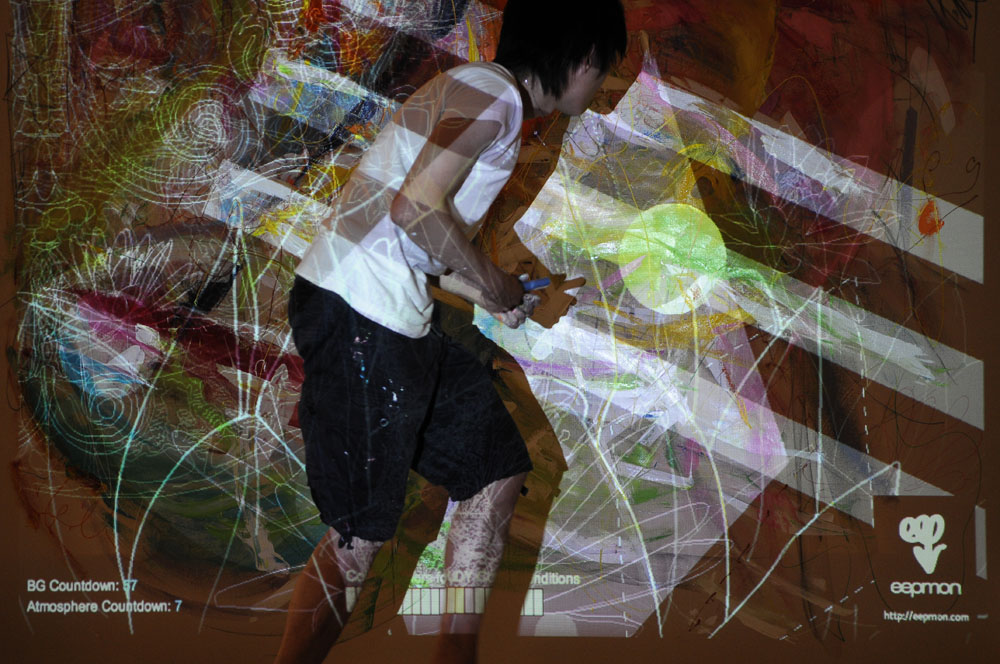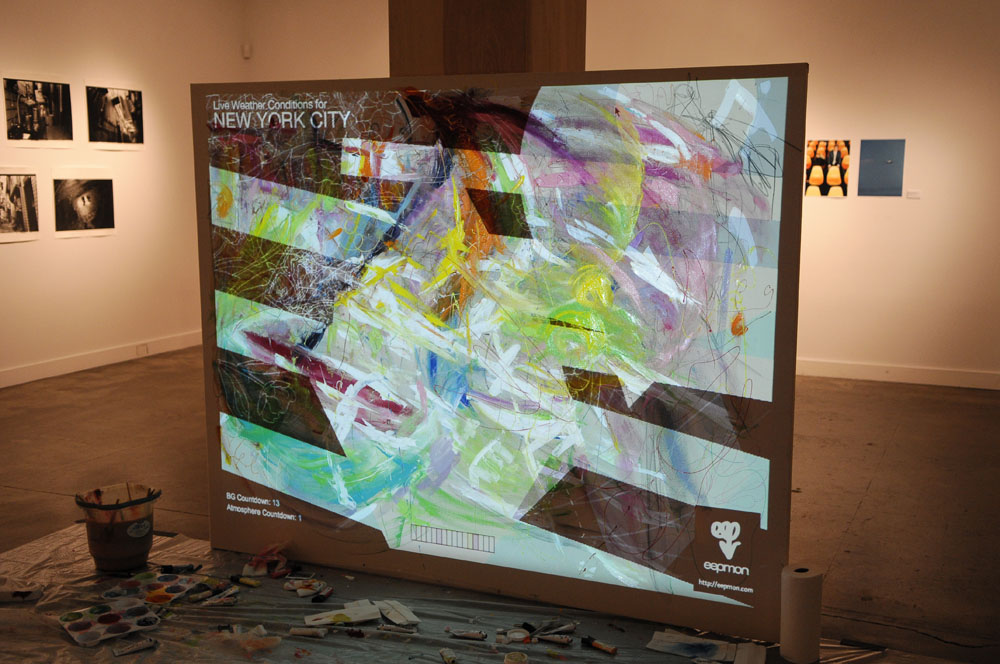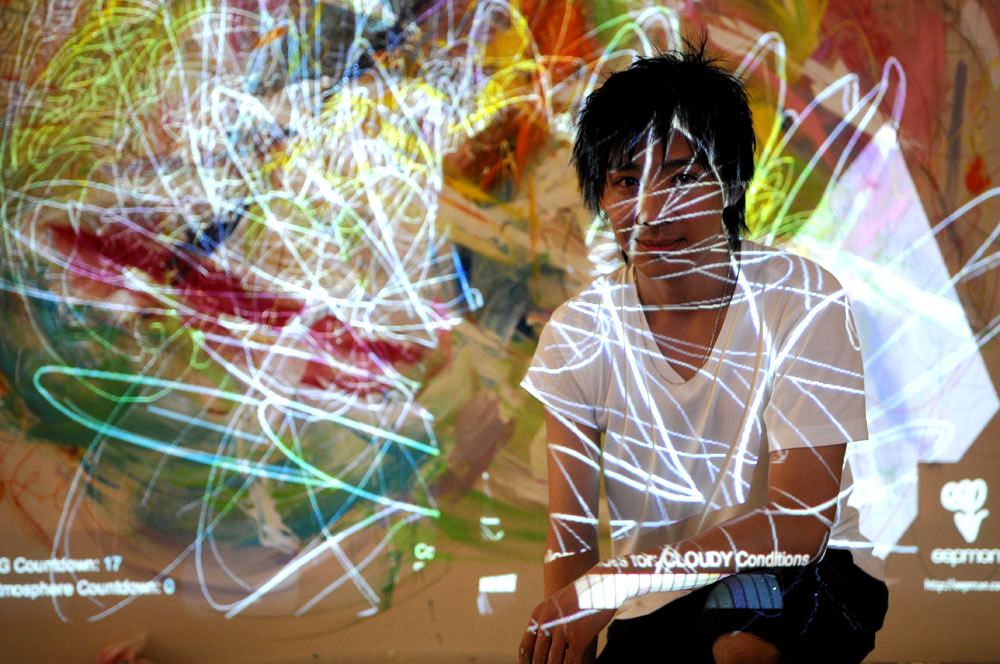
Intersections performance at HPGRP Gallery New York, 2011
Written by Andrea Fatona,
Curator of Contemporary Art (2008-2011)
Photos by Tokio Kuniyoshi
Artist-programmer Eric Sze-Lang Chan’s work resides at the intersection of painting and computer-mediated art. Chan’s process evokes a sensibility akin to action painting of the 1960s in the ways that it explores issues related to the body and performance. The artist integrates computer algorithms into his paintings, illustrating contemporary conceptions of the machine as an extension of the body. His process is shaped by chance and certainty, improvisation and script, affect and effect.

Chan obtains real-time data through a weather API service. An event-driven computer program is coded with parameters to translate the weather data into visual and audio formats. The incoming weather conditions are grouped into six categories: cloud, fog, clear, rain, snow and rare (including hurricanes and tornados).

Each category is assigned a corresponding colour theme and environmental sound selected by the artist. Chan then casts the computer-generated visual output onto the canvas, where moving lines, patterns, sounds and swatches of colour guide his gestural brushstrokes. The resulting brightly coloured canvases feature undulating lines, swirls, and patterns dissolving into figurative forms.
A relationship exists between computer vector graphics, the line, and the artist’s brushstrokes. In Intersections, the works take form through Chan’s dynamic act of following the trajectory of the projected lines. In her discussion on computer art and calligraphy, Laura U. Marks describes the line as performative rather than representational. Essentially, the line is time-based and dependent upon movement.



She states, “the relationship between point and line is performative, in that a line is drawn out from a point in duration: this might be the duration of sculpting wet stucco, of writing, of connecting points of light, or the act of following such lines with one’s eyes.”1 Chan’s performance paintings are collaborations between the computer and his body; they bridge concept and corporeality.
– Andrea Fatona, Curator of Contemporary Art (2008-2011)
1 Laura U. Marks, “Taking a line for a Walk, from the Abbasid Caliphate to Vector Graphics,” Third Text 23, no. 3 (May 2009): 229–240.